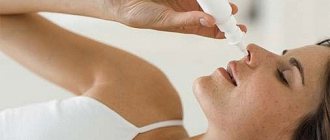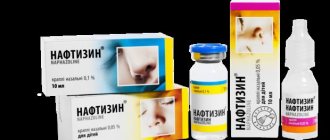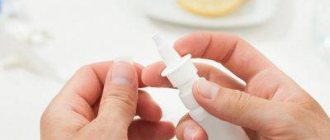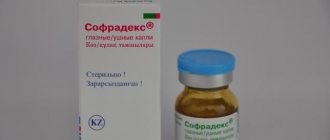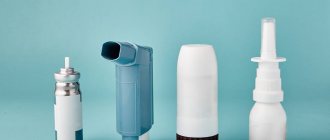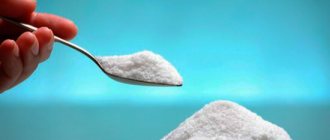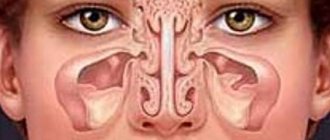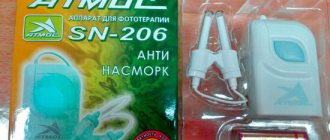How to get rid of addiction to drops?
If you are addicted to nasal drops, how to get rid of it?
You can do this yourself only at the initial stage of its development. Moreover, this will require strong-willed efforts. There are three ways by which you can get rid of addiction to drops:
- abrupt refusal;
- gradual withdrawal;
- drug replacement.
Abrupt withdrawal requires great self-control and willpower, so this technique is effective in mild cases when the patient simply endures a few days to wean himself off the habit. It will take 10 to 15 days for the nose to begin to function normally.
The gradual withdrawal method involves deliberately increasing the time between drug administration and dosage reduction. Usually they switch to medications intended for children, or dilute the usual drug with saline solution.
When particularly difficult moments arise, it is allowed to administer the drug into only one nostril outside the scheduled time. This makes breathing easier, and the mucous membrane of the second nasal passage is restored at this time.
The method of replacing a drug involves switching to a drug with a completely different active ingredient. For example, if you were dependent on xylometazoline, then it is recommended to choose a drug based on naphazoline, and after a while completely abandon it.
Simultaneously with the chosen method, you can carry out inhalations, take homeopathic medications, etc. This treatment has many nuances, so it should only be carried out under the supervision of a doctor.
Regardless of which method of getting rid of drip addiction was chosen, the following rules must be followed:
- carry out regular ventilation of living and working premises;
- install an aroma lamp or a household humidifier at home;
- use saline solutions to moisturize the mucous membrane;
- walk every day for at least 2 – 3 hours;
- include fresh vegetables and fruits in your diet;
- sleep with your shoulders and head raised, but only if there are no spinal diseases.
Traditional methods of treating drip addiction
It is impossible to eliminate the addiction from vasoconstrictor nasal drops using traditional methods. They can only slightly alleviate the patient’s condition, softening the transition from everyday use of the drug to normal life.
- Take an aloe leaf, squeeze the juice out of it and dilute it in a large amount of water. The prepared composition must be instilled 3–4 times a day, 4–5 drops.
- Liquid natural honey must be mixed with water in an equal volume, after which 4–5 drops are injected into the nasal cavity every 6–8 hours.
Treatment of drip addiction with medications
If a person is unable to wean himself off the drops within 2–4 weeks, then it is necessary to consult an ENT doctor so as not to further aggravate the situation. Depending on the severity of the condition, the doctor may prescribe:
- Local corticosteroids. These are drugs that have the opposite vasoconstrictor properties. These include: Beconase, Flixonase, Avamis, Nasonex, etc. At the same time, the use of the usual vasoconstrictor drops is temporarily maintained, strictly following the scheme individually developed by the doctor.
- Physiotherapeutic procedures. They are required in order to improve blood circulation in the pathological area of the mucous membrane. Usually the patient is prescribed electrophoresis.
- Operation. Surgery is the last method to get rid of drip addiction. It is carried out using a scalpel, removing part of the atrophied mucous membrane, or minimally invasive methods are used, such as ultrasonic disintegration, vacuum resection, radiocoagulation, laser vaporization.
Sometimes septoplasty is performed during surgery, that is, the nasal septum is straightened.
Thus, when using vasoconstrictor drops, addiction to them may occur. It is very difficult to get rid of such addiction on your own. If you cannot do this by any means, then you need to consult a doctor who will select the necessary treatment for such addiction.
How nasal drops work
How vasoconstrictors help get rid of a runny nose is clear from their name. The medicine affects the small blood vessels that are located inside the nasal mucosa.
The narrowing of the capillaries helps relieve swelling, the amount of mucus produced is noticeably reduced. When such drugs are used for a short time, they do not cause harm to health. In order for the nose to get used to the drops, you need to use them for more than a week without following the indicated dosage.
The appearance of dependence on vasoconstrictor nasal drops is explained by the presence of an aggressive active substance in them. These include:
- xylometazoline;
- oxymetazoline;
- naphazoline;
- phenylephrine.
If the drug contains one of these components, its use should be used in case of emergency and only for several days. There is no need to use the product without consulting a doctor, as it will not be easy to get rid of drip addiction.
Medical Treatments for Addiction
If you have not been able to cope with the addiction on your own within 2-4 weeks, you should immediately contact an otolaryngologist.
Otherwise, there is a risk of developing dangerous complications. Depending on the severity of the patient’s condition, the doctor may prescribe the following categories of drugs:
- Local corticosteroids. These drugs have the opposite effect compared to vasoconstrictor drugs. This category includes flixonase, Avamys, Nasonex. In parallel, you should use the usual vasoconstrictors, but you must strictly follow the treatment regimen recommended by your doctor.
- Physiotherapy methods. To improve blood circulation in the affected area of the mucous membrane, physiotherapy is used. Electrophoresis is considered the most effective method. Sometimes acupuncture is used to improve well-being.
- Operation. If there is no effect from conservative procedures, there is a need for surgical intervention. Depending on the patient’s condition, a standard procedure using a scalpel can be performed or minimally invasive techniques can be used. This category includes radiocoagulation, laser vaporization, vacuum resection, and ultrasonic disintegration.
Features of restoration of mucous membranes after surgery
The human body is capable of recovering on its own.
Therefore, after surgery, it is enough to rinse the nose with saline solutions for 1 week and remove dry crusts.
They should first be softened with oil - sea buckthorn or peach pits.
Also, to restore mucous membranes, medications that have an oil base are actively used. These include the following:
- pinosol;
- delufen;
- Euphorbium compositum;
- malavit-rino.
Do not forget about the use of natural oils in their pure form. Thus, sea buckthorn and peach kernel oils not only significantly accelerate the healing of postoperative wounds, but also activate the regeneration of mucous membranes.
- The mucous membrane of the nasopharynx is very sensitive;
- Swelling of the nasal mucosa - causes and treatment;
- https://lor-explorer.com/sopli-u-rebenka/lechenie-nasmorka-u-detej-po-komarovskomu – treatment of a runny nose according to Komarovsky.
Rules for the treatment of pregnant women
During the period of bearing a child, you should not use vasoconstrictor drugs.
However, nasal congestion causes serious discomfort and can lead to various consequences for the child.
A lack of oxygen in the blood is fraught with the development of hypoxia, which, in turn, negatively affects the development of the fetus.
Therefore, many women resort to the use of vasoconstrictor drugs. However, such products can only be used under the supervision of a specialist. If addiction does appear, you should immediately contact an otolaryngologist. In simple cases, the doctor will give recommendations regarding gradual or sudden withdrawal of such drugs.
In more severe situations, it may be necessary to use the medicine until delivery. However, in this case, the drug is usually prescribed in a pediatric dosage. This will help cope with congestion and avoid negative consequences for the child.
Symptoms and signs of drip addiction
Suspecting yourself that you have become addicted to vasoconstrictor drops can sometimes be quite difficult. A person may not even notice that he has begun to exceed the recommended dose and frequency of use, automatically introducing 1 to 3 drops more than necessary or using the drug more often than usual.
The main signs of dependence on nasal drops:
- the recommended dosage does not relieve nasal congestion;
- the medicine is used much longer than usual;
- a person constantly carries a bottle of medication with him;
- the appearance of severe anxiety if the medicine was not with you;
- automatic instillation for minor manifestations of nasal congestion.
Many people are on nasal medications for years and do not see a doctor. But if they try to get rid of drip addiction on their own, it will lead nowhere. On the contrary, the consequences of such negligence can be disastrous.
In the most advanced cases, drip dependence manifests itself as follows:
- swelling and dryness of the nasal mucosa;
- local hemorrhages;
- regular headaches;
- sensation of itching and tingling in the nasal cavity;
- sneezing and increased lacrimation;
- complete or partial loss of smell.
Nasal drop addiction: symptoms and signs
Suspecting addiction to vasoconstrictors is sometimes difficult.
After all, initially a person may not even notice that he is exceeding the recommended dosage and frequency of use.
Automatically, the patient introduces 1-3 drops more than prescribed or does this, involuntarily shortening the intervals between doses.
Thus, the main signs of developing dependence on nasal spray are:
- the single dose prescribed in the annotation does not relieve congestion;
- the medicine is used for much longer than a week;
- a person always has a bottle of medication with him, often a bottle at his workplace, at home, in his bag, etc.;
- severe anxiety if you don’t have the drug with you (forgot to buy it or left it at home);
- automatic instillation at the slightest manifestation of difficulty breathing.
Many people are able to sit on nasal medications for years and even decades and not seek qualified medical help.
Although any independent attempts to get off nasal drops practically do not yield results. The consequences of such negligence can be disastrous. In especially advanced cases, drug-induced rhinitis manifests itself:
- swelling and dryness of the nasal mucosa;
- the presence of local hemorrhages;
- regular headaches;
- the presence of a feeling of tingling and itching in the nasal cavity;
- increased lacrimation and sneezing;
- partial (hyposmia) or complete (anosmia) loss of smell.
More details about possible complications:
How to wean yourself off nasal drops
articles:
- 1 Folk remedies
- 2 Medical assistance
- 3 Inhalation
If you frequently put drops in your nose, you can get used to them very quickly: have you ever noticed when you are already healthy, but your runny nose still remains. This is the nasal drop habit. To get rid of a habit, you need to act immediately at the first sign.
Folk remedies
If you are dependent on nasal drops, it is very difficult not to use them. You need to make a supply of aloe and sea salt in advance; you can also purchase drops, but only those that contain herbal ingredients
It is very important to understand for yourself that you can do without nasal drops and begin treatment as quickly as possible
In order to get rid of the habit of dripping your nose when you sneeze for the first time, you need to reduce nasal drip to a minimum. There is no need to use the same drops for more than a week, which is also an important factor that reduces the occurrence of the habit.
Next we proceed to treatment with sea salt. Rinse your nose with the solution as much as possible. You need to dissolve a teaspoon of salt in a glass of water. Then use a teapot to rinse your nose a couple of times, each nostril.
And now if you find it difficult to breathe, you can not bury your nose, but rinse it with a saline solution. You will stop using sea salt drops for at least a day.
You can buy the solution at any pharmacy if you are too lazy to constantly remake the rinsing solution.
Aloe juice is very useful in this situation; it will draw out pus and help the healing process. But aloe juice is quite bitter, so the procedure is not pleasant, but it will help you in your further recovery.
It is enough to drop a couple of drops into each nostril and after a couple of minutes you will feel relief and a breathing nose.
We can note aerosol preparations that contain exclusively natural ingredients, and therefore you will not be able to get used to them. To purchase such a drug, you do not need a prescription from a doctor. When you go to bed, you can steam your feet in hot water, this procedure will help your nose to breathe freely, then put on warm socks or wrap your feet in a warm blanket.
Health care
We need to remember that self-medication does not always lead to recovery, so you can visit a consultation with an ENT specialist. There is a cure for these kinds of habits.
After a complete examination by the doctor, he will prescribe a nasal rinse, but on time. He will prescribe special drops that fit your nose. There is another way, but this is surgical manipulation.
This requires special radio wave therapy, which restores the vessels of the nose. This process is painless, there is no blood present in the operation, and after this procedure breathing becomes better.
The first days will also be difficult to breathe, but every day it will become easier and easier.
You can also use various physiotherapeutic procedures. Such as electrophoresis with various drugs, these procedures help relieve swelling, and therefore heal your nose a little.
Inhalation
Inhalation should be done an hour before or after meals. During inhalation, you need to inhale and exhale the drugs through your nose that you used when boiling water. You should breathe over the steam for no more than 4-5 minutes and repeat the procedure every 2 hours.
After the procedure, it is not recommended to go outside and it is better to lie in bed for 20-30 minutes. For inhalation, we can make a solution from eucalyptus; you need to boil 2 tablespoons of eucalyptus per 1 liter of water. The solution is ready, you can do inhalation.
Follow everything that is written in the article and you will always forget about your dependence on drops.
Admin
How did my addiction to nasal drops begin?
There's nothing worse than lying in bed at night trying hard to sleep with a stuffy nose. Eventually I came up with something that I started using every time before bed to help me breathe through my nose... a nasal spray.
The result is phenomenal, just a couple of sprays into each nostril and within a minute I am able to breathe normally through my nose. So I put the spray in my pocket and left it there for many weeks.
How come I didn’t think of using it before? Why doesn't everyone use nasal drops every time they have a cold? Well, unfortunately, I independently came to the answer to the question: why you shouldn’t use vasoconstrictor drops for so long and often.
The instructions for the spray included a warning that you should avoid using it for more than 3 days. And I did read it. However, he did not pay enough attention. The results from using it were too good for me to just stop. On the fourth night I decided that I would use it again the next night.
I didn’t know that nasal congestion causes swelling of the mucous membrane, and oxymetazoline relieves it by constricting the blood vessels. Reducing swelling makes it temporarily possible to breathe through your nose with relief. But as soon as the spray stops working, the swelling returns and is even stronger than before. The drops need to be used again and even more. This is such a vicious circle, and as a result - complete addiction to the vasoconstrictor drops.
The solution to the problem is obvious, isn't it? Just give up the vasoconstrictor drops to allow the mucous membrane to return to normal. It's easy to say. The inability to breathe normally through your nose sometimes just drives you crazy. This forces you to resort to vasoconstrictors again and again, even fully realizing that sooner or later this will result in a bigger problem.
Development of addiction and methods for eliminating it
First of all, among the reasons for the development of addiction is non-compliance with instructions for use. The mistake of many is precisely that they do not bother themselves to read the annotation
This carelessness arises from the belief that a runny nose is not a serious illness.
People often think that by taking medication they can stop taking it at any time, but if they develop an addiction to nasal drops, not everyone knows how to get rid of it. However, if you refuse the medicine, things get worse, and such a trivial pathology, as it seems at first glance, can lead to a rather serious disease, which will subsequently have to be treated for a long time.
How does addiction manifest itself?
In order to recognize the symptoms of addiction to drops, you need to be attentive to your condition and pay attention to even the slightest deviations. At the first stage of addiction, the vessels lose their properties, that is, they stop expanding and contracting without drugs, so-called withdrawal appears
Thus, nasal congestion only goes away when drops are taken continuously. At the same time, the nose cannot breathe without the medicine, and in order to achieve the desired result, the person increases the dose. In principle, the effect of the drops can be compared to the effect of drugs to which a person is highly dependent.
In addition, other symptoms may appear during addiction:
- burning and itching sensation in the nose;
- partial or complete loss of smell perception;
- there is a constant feeling of congestion;
- it becomes simply impossible to breathe through the nose;
- transparent mucous discharge is observed.
With such manifestations, it is necessary to urgently begin treatment and, even more so, stop taking the medications that contributed to this. You shouldn’t think that if I don’t drip the medicine, then everything will quickly return to normal; it’s better to take the help of a specialist.
Treating addiction at home
What to do to get rid of addiction to nasal drops yourself at home? It is necessary to completely stop dripping the drugs that caused this reaction.
Recovery time may vary depending on each case. In addition, this is influenced by the degree of development of addiction. Thus, on average, the recovery period can range from approximately one week to a month. But there are times when it is simply impossible to get rid of a medicine that negatively affects the condition and stop putting drops into your nose. To do this, you will need to carry out other activities:
- the medicine should be used as rarely as possible;
- Diluting the drug with water may help;
- you need to drip the medicine using a different technology, first into one nostril, and after some time into the other;
- Staying in the fresh air can also help get rid of addiction;
- it is necessary to ventilate and clean the apartment as often as possible;
- more often it is necessary to be in a position in which the shoulders and head are raised;
- It is useful in this case to use warming baths for the feet every day;
- and, of course, you should eat as many fruits as possible, preferably with vitamin C.
By rinsing your nose 3 to 5 times a day, you can bring the mucous membrane back to normal. In addition, pharmacies have other analogues of this product, as well as preparations based on sea water (Aqua-Maris, Aqualor).
Medical intervention to eliminate the addictive effect
In advanced cases, it is simply not possible to get rid of the addictive effect at home. If you use adrenergic agonists for a very long time, the development of mucosal atrophy will begin. Everyone should know how to prevent addiction to nasal drops and how to get rid of it. For this purpose, physiotherapeutic and surgical-surgical measures can be carried out.
In order to cure addiction to nasal drops, the following physiotherapeutic procedures are used:
- laser therapy;
- mineral therapy;
- capillary therapy.
At a more advanced stage, surgical intervention may be required, which can be represented by:
- cryotherapy;
- laser therapy;
- septoplasty;
- conchotomy;
- turbinoplasty.
Only a doctor can choose the right method, because each case requires an individual approach. When taking drops for a runny nose, it is worth remembering that this can only be done according to the instructions or on the recommendation of a specialist, in no case increasing the dosage or time of use of the drugs on your own, because curing dependence on drops is sometimes much more difficult than the runny nose itself.
How to wean yourself off vasoconstrictor nasal drops at home
You can get rid of naphthyzine addiction at home only in the initial stages of its development. Moreover, this is achieved only through volitional efforts.
1
A sharp refusal. Requires great self-control and willpower, so it is most effective in mild cases. Then the patient only needs to endure a few days to cure the addiction to nasal drops.
But to completely restore the normal functioning of the nose, it usually takes 10–15 days, and improvements are noticeable after just a few days.
2
Gradual withdrawal. The method is based on deliberately increasing the intervals between administration of the drug and reducing the dosage. The most common practice is to switch to medications intended for children or dilute the usual drug with saline solution.
In especially difficult moments, for example, at night, it is sometimes possible to administer the drug outside the planned time. This will make breathing easier and at the same time allow the mucous membrane of the second nasal passage to recover.
3
Replacing the drug. It is planned to switch to a medication with a completely different active ingredient. For example, if you are dependent on xylometazoline, you can choose naphazoline-based products and soon completely abandon it.
But at the same time you should carry out inhalations, take homeopathic medicines, etc. This therapy has many nuances, so it should be carried out under the supervision of an otolaryngologist.
The choice of method should be based on the personal qualities of a particular patient. Moreover, he must independently come to the conclusion that he needs to look for an effective way to get rid of dependence on nasal drops.
However, regardless of the choice of control method, the following rules must be observed:
- regularly ventilate living and working areas;
- use saline solutions to moisturize the mucous membrane;
- install a household humidifier and aroma lamp at home;
- walk daily for at least 2–3 hours;
- enrich your diet with fresh fruits and vegetables;
- try to sleep with your head and shoulders elevated, but only if there are no spinal diseases.
Folk remedies for treating “naphthyzine addiction”
It is impossible to remove dependence on Tizin or any other vasoconstrictor drug using only traditional methods.
They can only somewhat alleviate the patient’s condition and thereby soften the transition from daily use of drops to normal life.
- From an aloe leaf that is older than 3–5 years, squeeze the juice and dilute it with twice as much water. The resulting composition is instilled 3-4 times a day, 4-5 drops.
- Liquid natural honey is mixed with an equal volume of water and 4-5 drops are administered into the nose every 6-8 hours.
Hospital treatment
If there is no effect from independent attempts to get rid of addiction (which lasted for a month), the patient is recommended to urgently contact an otolaryngologist so as not to delay the solution of the problem further and not to aggravate an already difficult situation.
What treatment procedures the doctor can prescribe depends on how accustomed the patient is to the use of vasoconstrictors, and what changes the mucous tissue of the nasal passages has undergone.
Drug treatment involves the use of drugs from the group of corticosteroids. They have the opposite effect, unlike the usual drops. The most effective drugs in addiction situations are Beconase, Avamis and Nasonex. In the first days of therapy, the patient is allowed to use the usual drops, but only strictly following the doctor’s instructions and observing the dosage of both types of drugs.
Another method of conservative therapy is physical therapy. It is recommended to improve blood circulation in the mucous epithelium of the nasal passages. In most cases, doctors prescribe a course of electrophoresis sessions, but acupuncture has proven to be no less effective.
Physiotherapy to restore the nasal passages and get rid of addiction should be carried out over a course of at least 7–10 days
And the last resort for getting rid of medicinal rhinitis is surgery. The operation is recommended for advanced cases of dependence on drops, when the nasal mucosa has already undergone significant changes, and other methods of influence do not give the desired effect.
Methods of intervention provide different options:
- laser vaporization;
- ultrasonic disintegration;
- radiofrequency exposure;
- vacuum resection.
When using vacuum and ultrasound intervention techniques, the patient will be able to recover faster after the procedure, therefore these methods are most preferable for treating pathology.
During the recovery period, the patient is recommended to treat the nose with isotonic solutions daily; this should be done for at least a week. The use of salt compounds will help cleanse the mucous membrane of dried crusts, but before such cleaning it is advisable to soften them by treating them with peach or sea buckthorn oil.
These oils are famous for their ability to heal and restore the structure of the skin, so their use will speed up and facilitate the recovery process after surgery. At a later date, the doctor may allow the use of Pinosol, Euphorbium Compositum or Thuja-GF drops. They will also help restore mucosal tissue and prevent inflammation.
Treatment of dependence on vasoconstrictor drugs at home
Treatment for addiction associated with regular use of nasal medications can begin with the simplest steps. One of them is to take advantage of modern climate control technology. Buy a household humidifier. It maintains a certain level of humidity in the room. The electrical device prevents the mucous membranes of the nasopharynx from drying out and makes breathing easier. Regular rinsing of the sinuses with an isotonic solution (1 teaspoon of salt per 1000 ml of water, temperature 37-41°C) also works well for congestion and helps reduce the dose of nasal drops used. A light acupressure massage (once or twice a day) in the area of the maxillary and frontal sinuses will also help relieve swelling and ease difficulty breathing.
Other rules that should be followed by anyone who decides to overcome addiction to nasal drops:
- Adhere to the interval between administration of the pharmaceutical drug indicated in the annotation, striving to gradually increase it (the interval).
- To reduce the concentration of the active component, dilute the drops (1:1) with water,
- Instill the medicine into only one nostril.
- Increase local immunity (daily walks, airing rooms, regular wet cleaning in the sleeping area, a balanced diet with plenty of natural fruits and vegetables rich in microelements and vitamins).
- Sleep on high pillows, which prevents even more congestion.
- Daily breathing exercises.
- Use (after consultation with an otorhinolaryngologist) of oral medications of herbal origin, for example, Sinupret. The medicine, supplied to the market in the form of tablets or drops, reduces swelling, improves mucus drainage, and relieves inflammation in the respiratory tract.
- Supporters of alternative medicine are offered treatment with Balm Karavaev - Vitaon. It contains oil extracts of medicinal herbs and camphor. Before going to bed, after moistening turundas (twisted cotton swabs in a spiral) in Vitaon, you need to insert them into each sinus for 20-25 minutes. At the same time, take one tablet of Suprastin (or Diazolin) daily.
Can you die from nasal drops?
Many people do not think at all about the consequences of self-medication, especially when it comes to a common runny nose. There are many different vasoconstrictor drugs in pharmacies: drops, sprays, aerosols.
Their action is based on vasoconstriction. The swelling is removed, which significantly reduces mucus formation. The longed-for freedom of nasal breathing comes. However, it only lasts a few hours.
Those who are accustomed to the use of vasoconstrictor drugs should know the following:
- nasal drops and sprays do not have a therapeutic effect
- when they are used, only the symptoms are removed, which resume after a while
- the effect of the drug does not last long, after which swelling appears again
- To treat any runny nose, not only vasoconstrictor drugs should be used
- Nasal drops and sprays should be used as an auxiliary therapy to facilitate nasal breathing
Reasons why naphthysine poisoning occurs:
- the concentration of the solution does not correspond to the age of the patient
- it is difficult to visually determine the number of droplets that have entered the nose
- uncontrolled use of drops
What signs can be used to determine the mild or initial stage of naphthyzine poisoning:
- the patient experiences increased agitation
- heartbeat increases
- the patient feels dizzy
- the patient begins to experience abdominal pain
With prolonged intake of the drug into the body, its accumulation occurs, which means the symptoms of naphthyzine poisoning are aggravated:
- the heart begins to beat slower
- blood pressure decreases
- the patient feels lethargic, weak and drowsy
- There is no tone in the arms and legs
- confused consciousness
- body temperature decreases
- the patient turns pale
- skin is cold and damp
- shallow breathing
Such a serious condition can result in coma and even death.
An overdose of naphthyzine can cause poisoning
How to help a patient with such symptoms?
- call an ambulance
- stop taking medications
- cover the patient with a warm blanket
- give warm drink
- measure pressure and temperature
- try to prevent the patient from losing consciousness and falling asleep before the ambulance arrives
What is the danger of vasoconstrictor nasal drops?
Before you start using any remedies for the common cold, you need to understand the form of the disease. By origin, rhinitis can be viral-bacterial (infectious), allergic, vasomotor (neurogenic), hormonal (runny nose during pregnancy). According to the course - acute or chronic, according to the reaction of the nasal mucosa - hypertrophic or hypotrophic.
Only a doctor can understand each form of the disease and prescribe adequate treatment. But in life, when a person or his child has a runny nose, he goes to the pharmacy, where he is always advised to purchase vasoconstrictor sprays or nasal drops (vasoconstrictors). Considering the pathogenesis and causes of the forms of the disease, the use of these drugs is justified for almost all types of rhinitis, but differs in significance and dosage.
Thus, in the treatment of infectious rhinitis, vasoconstrictor drops play a leading role, reducing swelling of the mucous membrane and the formation of mucopurulent secretion. But with a runny nose of an allergic nature, antihistamines or hormonal agents come first, and the use of vasoconstrictor drops performs an auxiliary function. Therefore, for different forms of the disease, they differ in both the required single dose and the duration of the treatment course.
Without understanding these important points, the patient begins to use nasal drops as soon as congestion appears. After all, the positive effect occurs almost immediately: free nasal breathing and a full sense of smell are restored.
But the effect of the remedies quickly ceases, and the person resorts to them again. Gradually, he can no longer do without medications, unable to get out of the habit of them, carries them with him everywhere and thinks that he is being treated correctly and effectively.
This is the insidiousness of nasal vasoconstrictor medications. They form an addiction, which, of course, is not a drug addiction, but requires very close attention and considerable effort to “get off” it.
Unjustified use of drops can lead to such a serious disease as drug-induced rhinitis, which requires long-term therapy. And the third undesirable effect of vasoconstrictors is that despite their local use, they can have a systemic effect on the body.
The addiction to vasoconstrictor drops develops gradually and almost imperceptibly. The capillaries of the nasal mucosa, having received the dose, narrow as if by “external” order. Their tone increases, the release of blood plasma into the intercellular space of the epithelium stops, and the production of mucous secretion decreases.
In this case, the normal neuro-reflex regulation of vascular tone is disrupted, it practically stops working. The capillaries get used to external regulation through vasoconstrictors and wait for a new dose. Until it arrives, their narrowing and swelling do not decrease.
Having rejoiced at the excellent effect of instilling the drugs, after a while a person again feels stuffy, which forces him to increase the dose and reduce the intervals between doses in the hope of a lasting positive result. Often the patient does not even realize that the addiction has already formed and cannot “get off it” on his own. He requires competent advice and medical assistance.
With the constant flow of vasoconstrictors into the nasal cavity, the capillary network is in a forced spasm state. As a result, all tissues do not receive oxygen and nutrition, their metabolism is disrupted, and degenerative changes begin. The cells of the mucous membrane gradually die, it becomes thin, dry, vulnerable and hypotrophic.
Gradually, a condition called drug-induced rhinitis develops. Thus, in an effort to cure a common cold, the patient receives a more serious pathology that must be treated long and persistently.
There is also a danger of systemic action of nasal vasoconstrictor drops. This can happen if they overdose, especially if the person has some concomitant diseases. Entering the bloodstream, vasoconstrictor drugs have a spasmodic effect on the vessels of the entire body.
As a result, blood pressure rises, palpitations, shortness of breath, headaches, nausea and sleep disturbances appear. Overdose is very dangerous in childhood, when vasoconstrictors may require emergency hospitalization of the baby in the toxicology department of the hospital.
How many days does it take to wean off vasoconstrictor drops and nasal sprays?
When you stop taking vasoconstrictor medications, the patient may experience a painful state of nasal congestion. To feel normal both day and night, doctors recommend the following:
- stop using drops or sprays for 2-3 days
- endure unpleasant symptoms
Usually discomfort is felt for another 3 days. However, such “torture” will pay off handsomely, because the patient will not have to “feed” his dependence on the use of vasoconstrictor drugs from year to year.
- You can ease difficulty breathing by using light massage movements over the area of the external nasal turbinates.
- Breathing exercises will also help in the fight against nasal congestion. The essence of such gymnastics is to take a forced breath through the nose and exhale through the mouth. As a result of this method of breathing, the passages widen. The oxygen they contain dries out the nasal mucosa. Thanks to forced inhalation, the blood vessels are trained and tone up.
- To sleep without symptoms of nasal congestion, you can raise your pillow higher. Before going to bed, hot foot baths lasting 5 minutes are recommended. Mustard powder should be added to the bath water. After foot baths, a redistribution of blood flow occurs from the upper to the lower parts of the body. This reduces the blood filling of the nasal vessels. Swelling decreases, nasal passages expand. As a result of this simple procedure, breathing becomes easier.
Causes of dependence on drops
The reason for the addiction is simple and understandable. The instructions for the drug say one thing, but the patient does another, everything is banally simple. For some reason, many patients believe that vasoconstrictor drugs cure a runny nose. This is wrong. The action of these drops eliminates only one negative symptom - nasal congestion, and this is where the work of the drug ends.
In the instructions for adrenomimetics, as a rule, there are recommendations that nasal instillation should be carried out for no more than 37 days. Where then do such long-term treatment regimens come from? Why don't we keep what is written?
In half of the cases, patients simply do not read the instructions; for them it seems long and complicated. And when a drug helps, albeit temporarily, then such a remedy instantly gains confidence and becomes the number one remedy for lazy people who do not want to read the instructions and receive proper treatment.
Hence the conclusion: the cause of the addiction is an overdose, the medical diagnosis is medicinal rhinitis.
How to get rid of nasal drips
Features of the use of addictive nasal drops
Despite the assurances of manufacturers, there are no vasoconstrictor drugs that could not cause addiction to nasal drops.
Moreover, if you use them for a week and then stop abruptly, swelling of the mucous membrane may appear. In addition, as experts recommend, you should not use the same product every time to relieve congestion.
Indications for the use of vasoconstrictor drops
Compliance with the instructions when using drops is mandatory. In no case should you exceed the indicated dosage and use them very often. Even those products that have a short-term effect should not be used for more than 4 days, because the body can quickly get used to it.
Vasoconstrictor drops are used if:
- vasomotor or allergic rhinitis;
- sinusitis and other pathologies affecting the sinuses;
- runny nose.
Drops act on adrenaline receptors, which are located on the mucous membrane. Thus, vasoconstriction occurs, accordingly, nasal congestion decreases and previous breathing is restored. But, despite the significant relief, even one extra day of using drops can become addictive.
In addition, the use of drops has a number of side effects. Among them are:
- development of an allergic reaction to the drug;
- dryness and irritation of the mucous membrane;
- the heartbeat rhythm is disturbed;
- headaches may occur;
- blood pressure rises.
Contraindications to the use of vasoconstrictor drops
Under some circumstances you should not use drops:
- with individual intolerance;
- for glaucoma;
- with atrophic rhinitis;
- with hyperthyroidism – increased production of thyroid hormones;
- with the development of tachycardia;
- in case of severe atherosclerosis;
- for hypertension.
If possible, it is best to replace regular drops with sprays. In this case, the desired effect is achieved without exceeding the dosage. You can use sprays longer than drops, but no more than 10 days, but it is best to instill no more than 5. If addiction does develop, then only a specialist will help you get rid of it.
Composition of vasoconstrictor drops and their types
There are different nasal drops with a vasoconstrictor effect, which can cause addiction, according to the principle of action of the decogestant and its type:
- Drops containing phenylephrine (Vibrocil, Polydexa). Preparations with this composition last up to 6 hours and minimally dry out the mucous membrane. This type is considered the least dangerous in terms of the development of complications.
- Products containing indanazoline (Indanazoline). Its action is aggressive, affects the nasal flora, and quite significantly dries out the mucous membrane.
- Naphazoline is included in drops with a short-term effect, no more than 6 hours (Naphthyzin, Naphazolin).
- Products containing tetrizoline are also characterized by short-term action (Tetrizoline).
- The average duration of action for drugs with xylometazoline (Galazolin, Dlyanos). Their effect can last up to 10 hours. But at the same time they greatly dry out the mucous membrane.
- The longest action is found in drugs with oxymetazoline (Nazivin, Rinazolin). Their effect can last up to 12 hours. Despite the long-term effect, they have a fairly gentle effect on the nasal epithelium.
All drugs that belong to the same group contain a specific active substance with a difference in its concentration. That is why similar drops can vary greatly in effect.
Are nasal drops dangerous?
how to treat it correctly
- infectious;
- allergic;
- neurogenic;
- hormone.
Only a very experienced doctor can determine the form of your disease, as well as choose the right treatment. But people don’t always go to the doctor with a runny nose. Most often, when this disease occurs in an adult or child, you go to the pharmacy, where you will be advised to buy vasoconstrictor drugs. In general, there is nothing wrong with this, since for any form of rhinitis these drugs are considered very effective, but you need to skillfully select the dosage and method of treatment.
For infectious rhinitis, vasoconstrictor sprays and drops are used to prevent swelling of the mucous membrane and reduce the formation of purulent mucous secretion. But with allergic rhinitis, antihistamines and hormonal drugs come first, which will help reduce the symptoms of the disease. And in this case, vasoconstrictors are used only as auxiliary drugs. This is why consulting a doctor is so important. After all, for different diseases, the dosage should be different.
Without understanding this, a person begins to use drops or sprays without control. After all, the effect begins to appear from the first use and lasts for quite a long time. But nevertheless it passes. And then the patient again applies the spray or drops. So you can gradually get used to the medications and it becomes more and more difficult to do without them. At the same time, the patient does not see addiction, but believes that he is being treated correctly.
